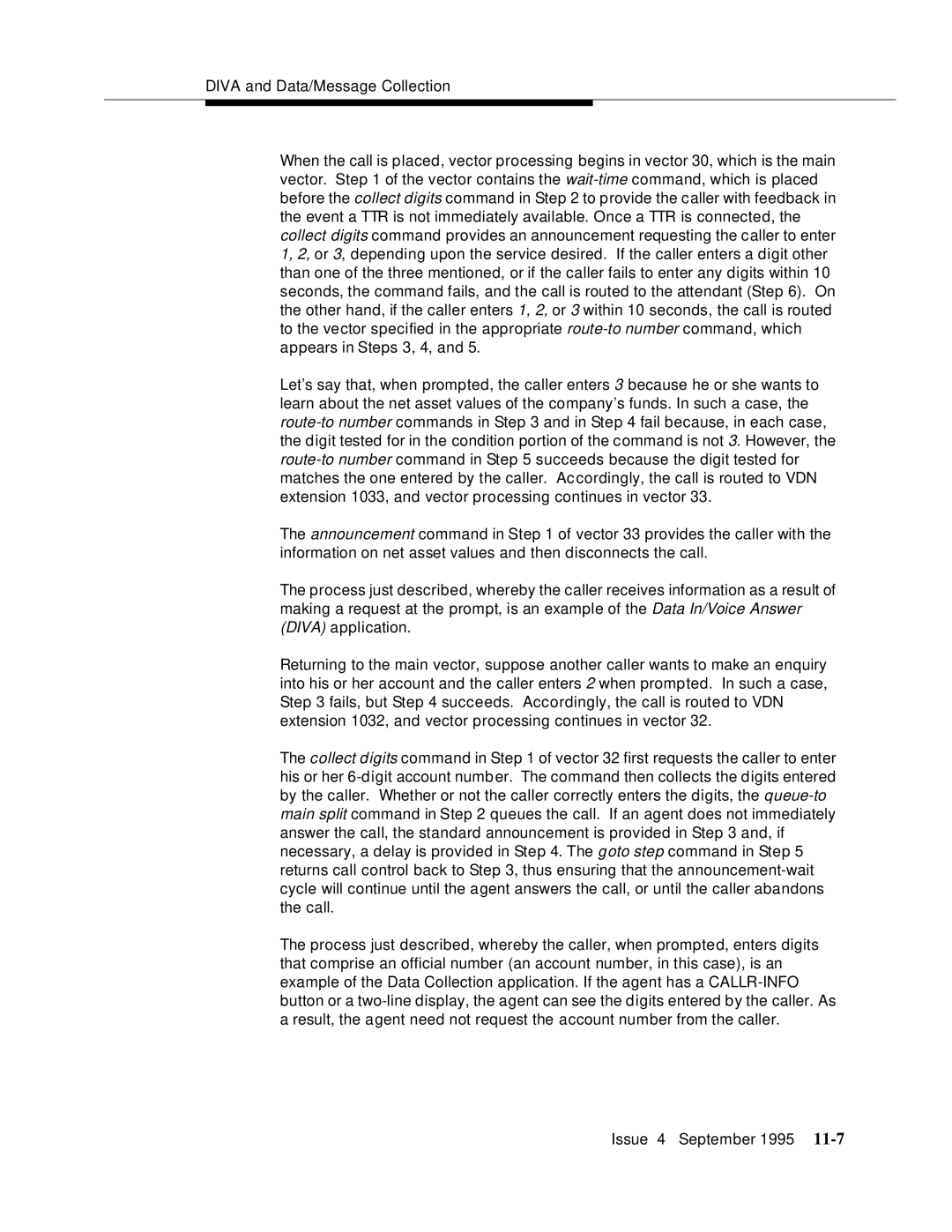When the call is placed, vector processing begins in vector 30, which is the main vector. Step 1 of the vector contains the wait-timecommand, which is placed before the collect digits command in Step 2 to provide the caller with feedback in the event a TTR is not immediately available. Once a TTR is connected, the collect digits command provides an announcement requesting the caller to enter 1, 2, or 3, depending upon the service desired. If the caller enters a digit other than one of the three mentioned, or if the caller fails to enter any digits within 10 seconds, the command fails, and the call is routed to the attendant (Step 6). On the other hand, if the caller enters 1, 2, or 3 within 10 seconds, the call is routed to the vector specified in the appropriate route-to number command, which appears in Steps 3, 4, and 5.
Let’s say that, when prompted, the caller enters 3 because he or she wants to learn about the net asset values of the company’s funds. In such a case, the route-to number commands in Step 3 and in Step 4 fail because, in each case, the digit tested for in the condition portion of the command is not 3. However, the route-to number command in Step 5 succeeds because the digit tested for matches the one entered by the caller. Ac cordingly, the call is routed to VDN extension 1033, and vector processing continues in vector 33.
The announcement command in Step 1 of vector 33 provides the caller with the information on net asset values and then disconnects the call.
The process just described, whereby the caller receives information as a result of making a request at the prompt, is an example of the Data In/Voice Answer (DIVA) application.
Returning to the main vector, suppose another caller wants to make an enquiry into his or her account and the caller enters 2 when prompted. In such a case, Step 3 fails, but Step 4 succeeds. Accordingly, the call is routed to VDN extension 1032, and vector processing continues in vector 32.
The collect digits command in Step 1 of vector 32 first requests the caller to enter his or her 6-digit account number. The command then collects the digits entered by the caller. Whether or not the caller correctly enters the digits, the queue-to main split command in Step 2 queues the call. If an agent does not immediately answer the call, the standard announcement is provided in Step 3 and, if necessary, a delay is provided in Step 4. The goto step command in Step 5 returns call control back to Step 3, thus ensuring that the announcement-wait cycle will continue until the agent answers the call, or until the caller abandons the call.
The process just described, whereby the caller, when prompted, enters digits that comprise an official number (an account number, in this case), is an example of the Data Collection application. If the agent has a CALLR-INFO button or a two-line display, the agent can see the digits entered by the caller. As a result, the agent need not request the account number from the caller.
